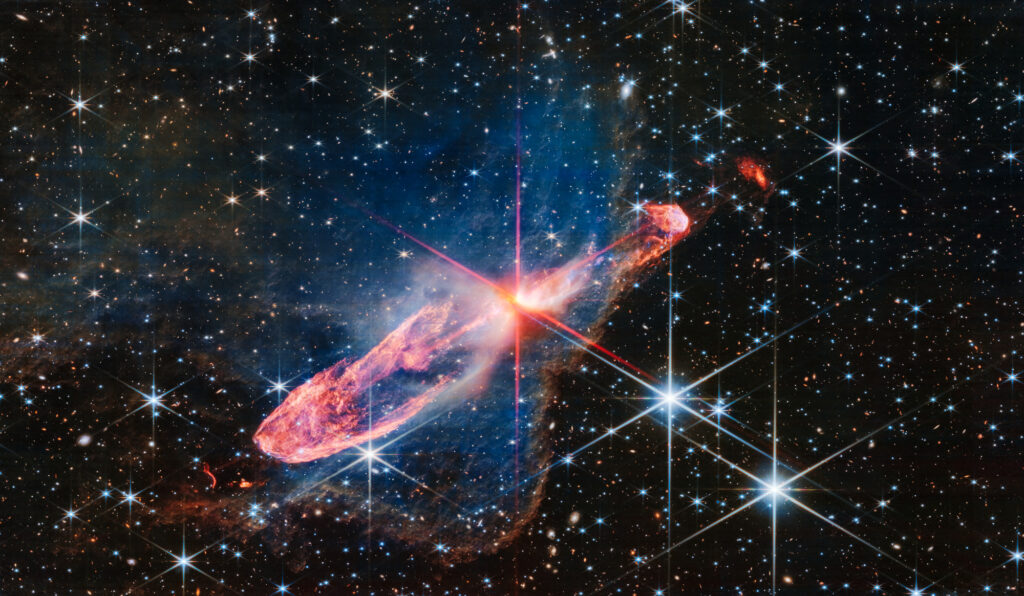The James Webb Space Telescope (JWST) has received the most detailed infrared image of the HH 46/47 complex to date. It is formed by the jets of a pair of young stars.

The HH 46/47 complex is located at a distance of 1,470 light-years from Earth in the direction of the constellation Vela. It represents Herbig-Haro objects: jets formed by newborn stars in the first few million years of their life. The ejected substance collides with the surrounding gas-dust clouds and actively interacts with it, which manifests itself in the formation of a number of characteristic structures resembling petals.
The stars responsible for the formation of HH 46/47 are located inside the orange-white region, bright diffraction rays radiate from them (this is an optical effect associated with the design of the JWST). The luminaries are hidden inside a gas-dust disk, which provides them with a substance for mass gain. The disk is not visible in the infrared range, but its shadow forms two dark conical regions surrounding the central stars.
The most striking details of the image are the two-sided petals marked in fiery orange, fanning out from the forming central stars. They were formed during the processes that took place over the past millennia, when new emissions of substances collided with older ones and changed their shape. In the JWST image, later emissions are highlighted in blue in the form of threads.
You can also pay attention to the second most noticeable feature of the JWST image — a foggy cloud, which is indicated in blue. This is a globule. This is what nebulae are called, which are characterized by a high density of dust and gas. When observed in the visible range, globules look like dark clouds, because the light of background stars does not pass through them. But in the infrared range, everything is different. We can see the objects behind the globule and consider its structure.
By astronomical standards, HH 46/47 is a very short-lived formation. In just a few million years, a pair of stars will fully form and stop emitting, which will lead to the disappearance of this fantastic-looking celestial canvas.
Recall that JWST recently celebrated its birthday with a picture of a stellar maternity hospital.
According to https://www.nasa.gov
Follow us on Twitter to get the most interesting space news in time
https://twitter.com/ust_magazine
